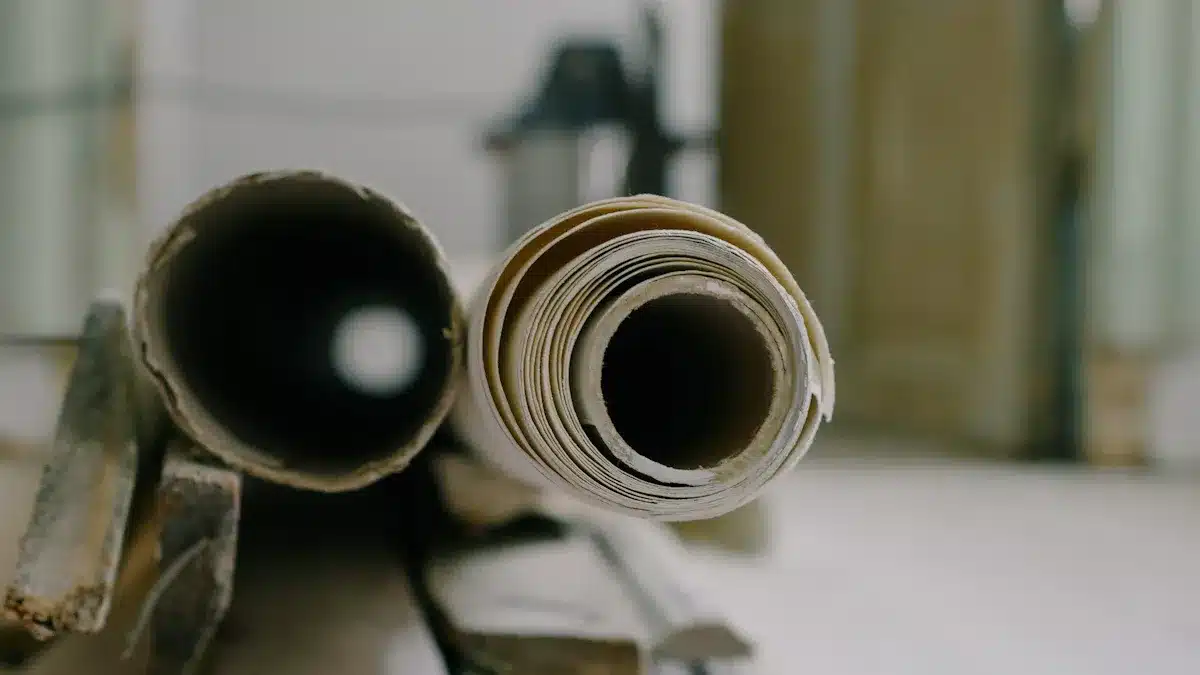
When you think of balloons, you may imagine bright party decorations or tools for science experiments high in the sky. But have you ever thought about how they are made? A balloon factory uses advanced methods to turn natural latex into balloons. The need for balloons is increasing quickly. For example:
Hot air balloons are becoming popular because of adventure tourism.
Scientific balloons are expected to grow from $400 million in 2023 to $650 million by 2032, with a yearly growth of 5.5%.
These changes highlight the incredible work done in a balloon factory, combining new ideas with skilled craftsmanship.
Key Takeaways
Balloons are made from latex, which comes from tree sap. This material makes balloons strong and stretchy.
Factories clean molds, heat them, and add coatings. These steps make balloons smooth and tough.
Molds are dipped in liquid latex to shape balloons. Factories use special ways to make them thick and strong.
Testing balloons is very important. Factories check their strength and quality to keep them safe.
Balloons get colorful prints and designs for parties. Green packaging helps cut down on trash.
Raw Materials in Balloon Manufacturing

Natural Latex and Its Sources
Balloons start as latex, which comes from rubber tree sap. The rubber tree, called Hevea Brasiliensis, is important for making balloons. Workers gently cut the tree’s bark to collect the sap. This method lets the sap flow without hurting the tree. The sap is then processed into rubber for balloon production.
The type of latex used affects how strong and stretchy balloons are. Natural latex is flexible and eco-friendly, making it great for latex balloons. Sometimes factories use synthetic latex for stronger or special balloons.
Preparing Latex for Balloon Production
After collecting latex, factories clean it by filtering out dirt. This step makes sure the latex is pure and ready to use. Next, they mix the latex with stabilizers and other chemicals. These help the latex stretch and keep its shape during production.
Temperature control is very important in this process. Latex reacts differently to heat or cold, so factories adjust temperatures carefully. This step ensures the latex stays soft and easy to shape. Proper preparation helps make durable and good-looking balloons.
Mold Preparation in a Balloon Factory
Cleaning and Heating the Molds
Before making balloons, molds need cleaning and preparation. Clean molds help latex stick evenly, making smooth and strong balloons. Factories wash molds with water and soap to remove dirt. This step stops leftover grime from ruining the balloon’s quality.
Drying molds is just as important. Wet molds can cause uneven latex layers or mold problems. Factories use special drying methods to remove all moisture. Good airflow helps keep molds dry and ready for use.
Heating molds is another key step. Warm molds help latex stick better and avoid mistakes. Raising the mold’s temperature also stops mold growth in cold spots. These steps make sure molds are clean, dry, and warm for balloon production.
Adding Coatings for Balloon Formation
After cleaning and heating, factories add coatings to the molds. These coatings create a barrier so latex forms a smooth layer. Without coatings, latex might stick unevenly or rip when removed.
The coating type depends on the balloon’s use. Some coatings include materials like urea or shellac. These materials change how latex behaves during dipping. Factories pick coatings carefully to make balloons strong, stretchy, and easy to shape.
This step is very important for making good balloons. By knowing how coatings work with latex, factories improve production and make balloons you’ll love.
How Balloons Are Made Through the Dipping Process
The dipping process is an important part of making balloons. It involves dipping molds into liquid latex to shape the balloon. Factories use two main methods: straight dipping and coagulant dipping. Each method is chosen based on the type of balloon needed.
Straight Dipping vs. Coagulant Dipping
Straight dipping is the easier method. Clean, warm molds are dipped into liquid latex. The latex sticks to the mold, forming a thin layer. This method is good for smooth balloons but may need extra dips for thickness.
Coagulant dipping uses a special solution to make latex solidify faster. Molds are coated with coagulant before dipping into latex. The coagulant reacts with the latex, making it thicker and stickier. This method is great for balloons needing exact thickness, like medical or industrial ones.
Tip: Use coagulant dipping for strong, evenly thick balloons.
Shaping Balloons with Latex
After latex sticks to the mold, shaping happens. Molds spin or move to spread latex evenly. This step avoids weak spots and keeps balloons strong. Factories control the speed and angle of rotation carefully.
Next, the latex dries and takes the mold’s shape. Some factories use air or heat to dry it faster. This helps the latex set well and prevents flaws.
The dipping process combines science and skill. Knowing how latex works during dipping shows the effort behind every balloon.
Washing and Vulcanization for Durability
Cleaning Balloons After Dipping
After latex dries on molds, balloons need cleaning. This step removes leftover chemicals or residue. Factories clean balloons to make them safe and smooth. Residue can weaken balloons or irritate skin when touched.
Factories rinse balloons in water baths to wash off coagulants. Mild detergents are sometimes added for better cleaning. Balloons go through several rinses to remove all residue.
Note: Clean balloons look nicer and last longer. This step gets them ready for the next production stage.
Next, balloons are dried using air dryers or heat chambers. Dry balloons are easier to handle and prepare for heat treatment.
Strengthening Balloons with Heat Treatment
Heat treatment, called vulcanization, makes balloons tougher and stretchier. High temperatures improve latex elasticity and strength. You might think heat damages latex, but it actually makes it better.
Balloons are placed in ovens or heated chambers during vulcanization. Heat strengthens chemical bonds in latex, making it durable. This step helps balloons stretch without tearing and keeps their shape when inflated.
Factories carefully control heat levels and timing. Too much heat ruins latex, while too little leaves it weak.
Tip: Vulcanized balloons work well for parties, medical needs, and science experiments. Their strength makes them reliable for many uses.
After vulcanization, balloons cool down before quality checks. This step turns fragile latex into strong, ready-to-use balloons.
Quality Control in Balloon Factories
Testing for Strength and Elasticity
Quality control makes sure balloons are strong and stretchy. Factories use tests to check how balloons handle stress. Tensile testing stretches balloons to see if they stay durable. This test checks if balloons return to their shape after stretching. Fatigue testing mimics repeated use to ensure balloons last through many inflations. Hydrostatic pressure testing measures if balloons can hold high pressure without popping.
Good balloons have smooth surfaces and even colors. These features show careful production steps. Thicker balloons are stronger because of stricter manufacturing. High-quality latex balloons smell lightly of natural rubber. Lower-quality ones may smell strongly of chemicals.
Medical balloons go through special tests after sterilization. These tests confirm they stay flexible and strong. This ensures they are safe and reliable for medical use.
Tip: Pick balloons with smooth surfaces and even colors for better quality.
Ensuring Consistency in Balloon Size and Shape
Balloon size and shape must be consistent for good quality. Factories use molds and machines to keep balloons uniform. After making balloons, workers inspect them visually and measure them. These checks confirm the balloons meet size requirements.
Machines measure balloon diameter and thickness for accuracy. Small differences can affect performance, especially for medical balloons. Factories inflate sample balloons to check their shape and stretchiness. This step finds defects before packaging.
Strict quality control ensures balloons meet expectations for parties or special uses.
Printing and Packaging of Balloons
Adding Colors and Designs
After shaping and strengthening, balloons get colors and designs. This step makes them look fun and fit for events. Factories use advanced printers to create bright and detailed designs.
Modern printing, like UV and digital methods, adds clear patterns. These techniques keep colors bright and prevent fading. Balloons now come in many shades, from classic to trendy ones. This variety helps match balloons to any celebration, like birthdays or weddings.
Designs have become more creative over time. Plain balloons are no longer the only choice. Factories now make balloons with polka dots, stripes, or custom logos. These designs make balloons more stylish and unique.
Here’s a simple table showing how designs improve balloons:
Feature | Details |
|---|---|
Printing Methods | UV and digital printing create bright, detailed designs. |
Color Choices | Many colors are available, making balloons great for events. |
Design Styles | Patterns like dots and stripes add personality and charm. |
Adding designs turns plain balloons into eye-catching decorations. This step mixes creativity with careful work.
Preparing Balloons for Shipment
After printing, balloons are made ready for delivery. Factories check printed balloons to ensure designs are perfect. Any damaged balloons are removed to keep quality high.
Next, balloons are deflated and neatly folded. Machines sort and count them into groups. These groups are packed in airtight bags to stay clean and fresh. For big orders, balloons go into boxes with labels for size, color, and design.
Factories also focus on eco-friendly packaging. Many now use recyclable materials to reduce waste. This shows their care for the environment.
Finally, packed balloons are shipped to stores or customers worldwide. This ensures you get balloons that are ready to inflate and enjoy.
Making balloons today is a mix of old and new methods. Factories use natural latex to create strong, colorful balloons. These balloons are used for parties and science projects. Balloon-making has improved a lot over time. For example:
Modern hot air balloon burners release 30 million BTU. This is much more than the 2-3 million BTU burners from the 1960s.
A personal hot air balloon system costs about $50,000 in 2025. This shows better safety and advanced designs.
The process of turning latex into balloons shows skill and creativity.
FAQ
What makes latex balloons eco-friendly?
Natural latex comes from rubber trees, which grow back. These balloons break down faster than synthetic ones. Throw them away properly to help the environment.
Note: Don’t let balloons go outside. They can hurt animals.
How long does it take to manufacture a balloon?
Making a balloon takes a few hours. Steps like drying and heating affect the time. Modern machines help factories work faster.
Can balloons be recycled?
Latex balloons can’t be recycled normally but do break down. You can compost small amounts of them. Foil balloons need special recycling methods.
Why do balloons pop when overinflated?
Stretching latex too much makes it weak and causes popping. Inflate balloons to the right size to stop this.
Tip: Use a pump with a gauge to inflate correctly.
Are printed balloons safe for children?
Yes, printed balloons are safe if made with non-toxic inks. Factories check them for safety. Watch kids closely to avoid choking risks.
🎈 Fun Fact: Bright balloons make parties more fun!





